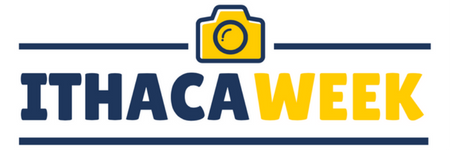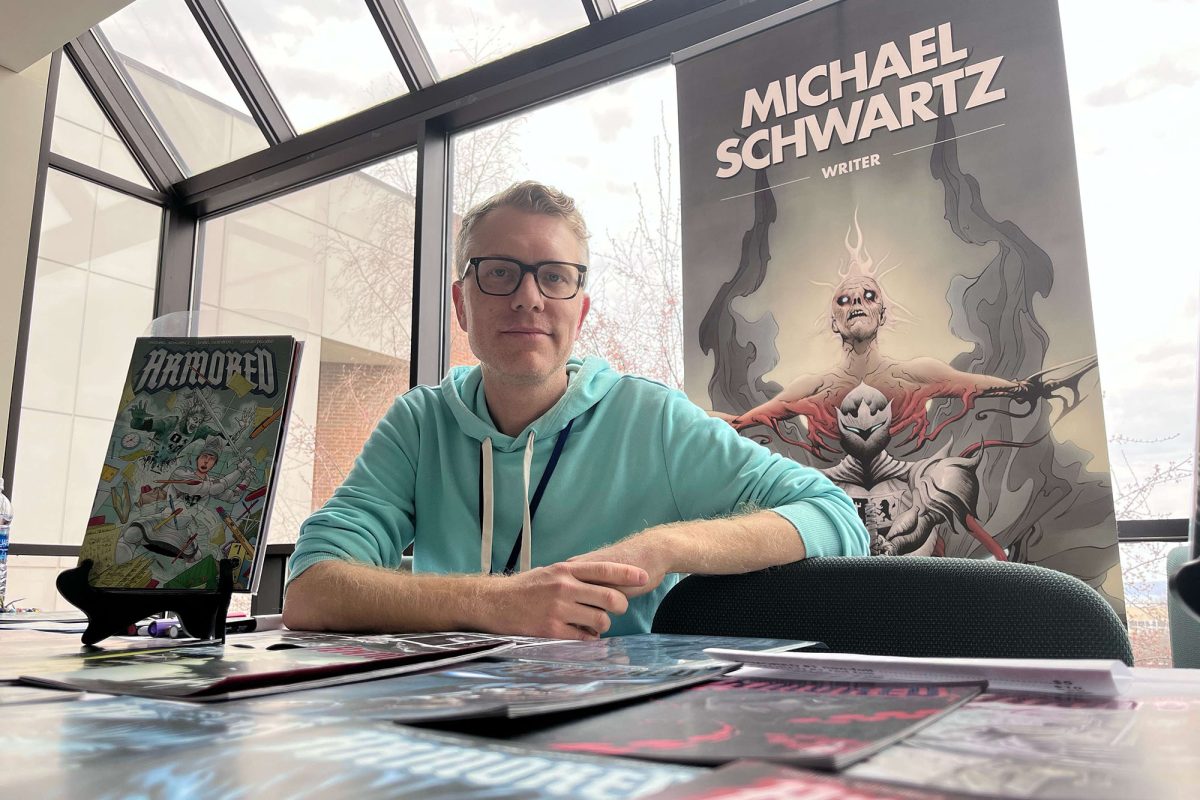Mara Baldwin, Director of the Handwerker Gallery said, “One of the reasons I like to work with living, breathing artists here at the Handwerker [Gallery] is because we can look at new art with the artist and think about what it means and how it exists in the world and how we comprehend it in new ways.”
Chang said when Baldwin approached him about exhibiting his work at the Handwerker Gallery, he had lots of art that he had been working on, but he said he didn’t have any specific works in mind for a collection.
“I think about building a framework much more than I think of building a finished work,” Chang said. “It’s groups of art that may be related but increasingly I’m liking when they’re not related, and I have to dig, and I have to explore.”

Unfired clay
16.5 x 15.5
Photo by Gabrielle Topping
Inspiration for his unfired clay tablets came from the “imaginary future of climate change literature.” Chang said he wanted to create an object that was mysterious and displaced from time by making a broken office memo about climate change on a clay tablet to create unease for the viewer.
Since Chang is interested in architectural methods, he used a paper squeeze technique on several pieces in this collection.

Molded paper, wood, paint
24.75 x 50
Photo by Gabrielle Topping
“Paper squeeze is fundamentally very simple, but I like to use it to bring back this archaeological significance to it,” he said. “It’s basically an impression with paper over some sort of relief surface. It could be decorations. It could be architectural. It could be a full sculpture. It was a way for archeologists and academics to have a record.”
Chang said his artwork, “What Happens After This?” was inspired by the Black Lives Matter movement and the resiliency of the protests. He said he used the paper squeeze technique to bring attention to the moment when they brought the fence out in Washington, D.C.’s Lafayette Square by creating a section of the fence based on a news image.
“What I was doing was magnifying this moment,” he said. “In the same way as archeologists were trying to make an impression of something in the past to study later, I was trying to do the same thing with this moment.”

Molded paper, wood, paint
76 x 36 x 9; 38 x 21 x 9 (installation varies)
Photo by Gabrielle Topping
During the height of the coronavirus pandemic, Chang said he was inspired to create a sculpture based on an essay he read about parenting during this time period.
“It really resonated with me and it interested me because insanity and monotony are not totally opposite,” he said. “The pairing really stood out to me because it perfectly describes bipolar capitalism modes of experience. I wanted to combine this with post-capitalist ideas that I have.”
Chang said he creates many smaller versions of each artwork, such as “Bye Now Pay Later” before he commits to the larger final product.

Molded paper, wood, paint
24 x 47.5
Photo by Gabrielle Topping
“I thought this paper squeeze, paper molding process could reveal something that couldn’t be seen with the eye,” he said, “I’m really interested in the idea of residue and I eventually came upon the idea that with data the x-axis is always time, so I layered those two concepts together.”
Chang said he loves finished artwork, but he’s more interested in the process of creating art and the different versions that are produced.
“I’m fascinated with what isn’t there [negative space],” he said. “Everything that doesn’t go into a work. Everything that doesn’t make the cut, I really like and think about. There are constantly little cut-outs around my studio from collages and it’s so interesting to me because there are distinctive shapes that come about and they’re worth exploring.”

Ink, marker, and graphite drawing collage on paper
30 x 22
Photo by Gabrielle Topping











